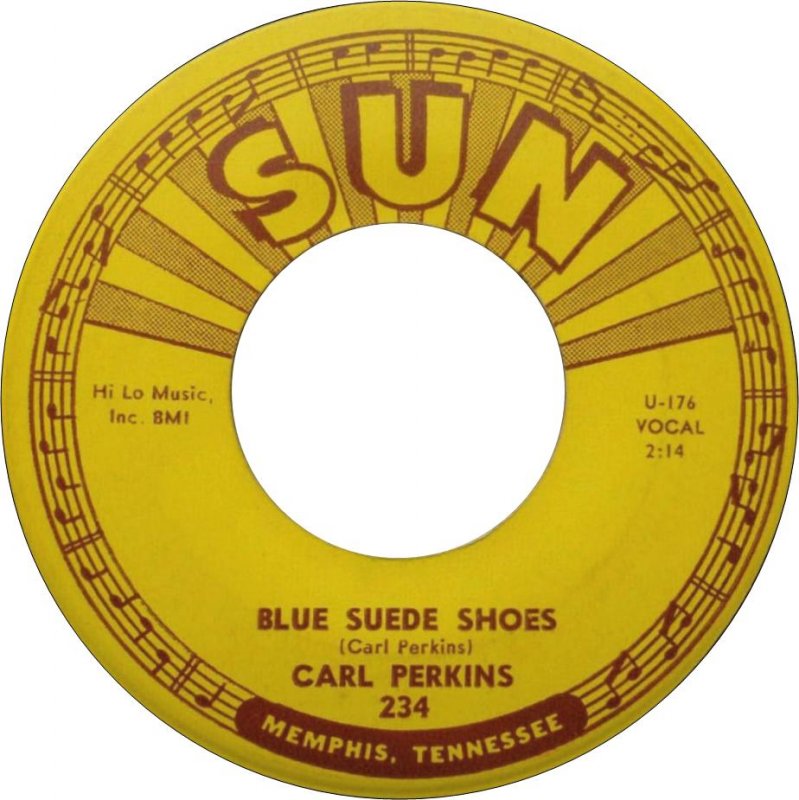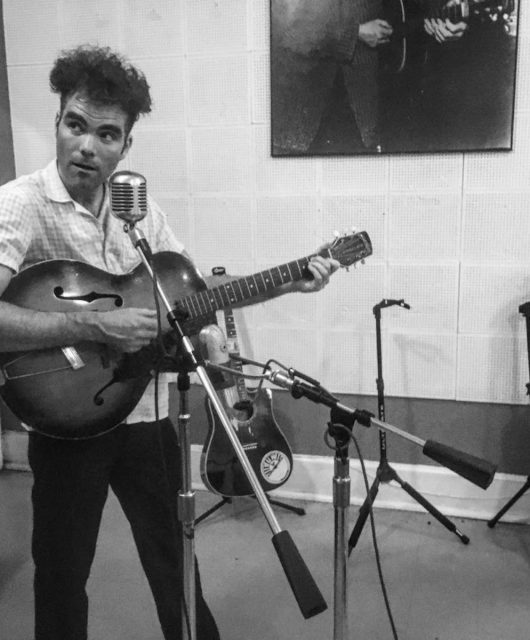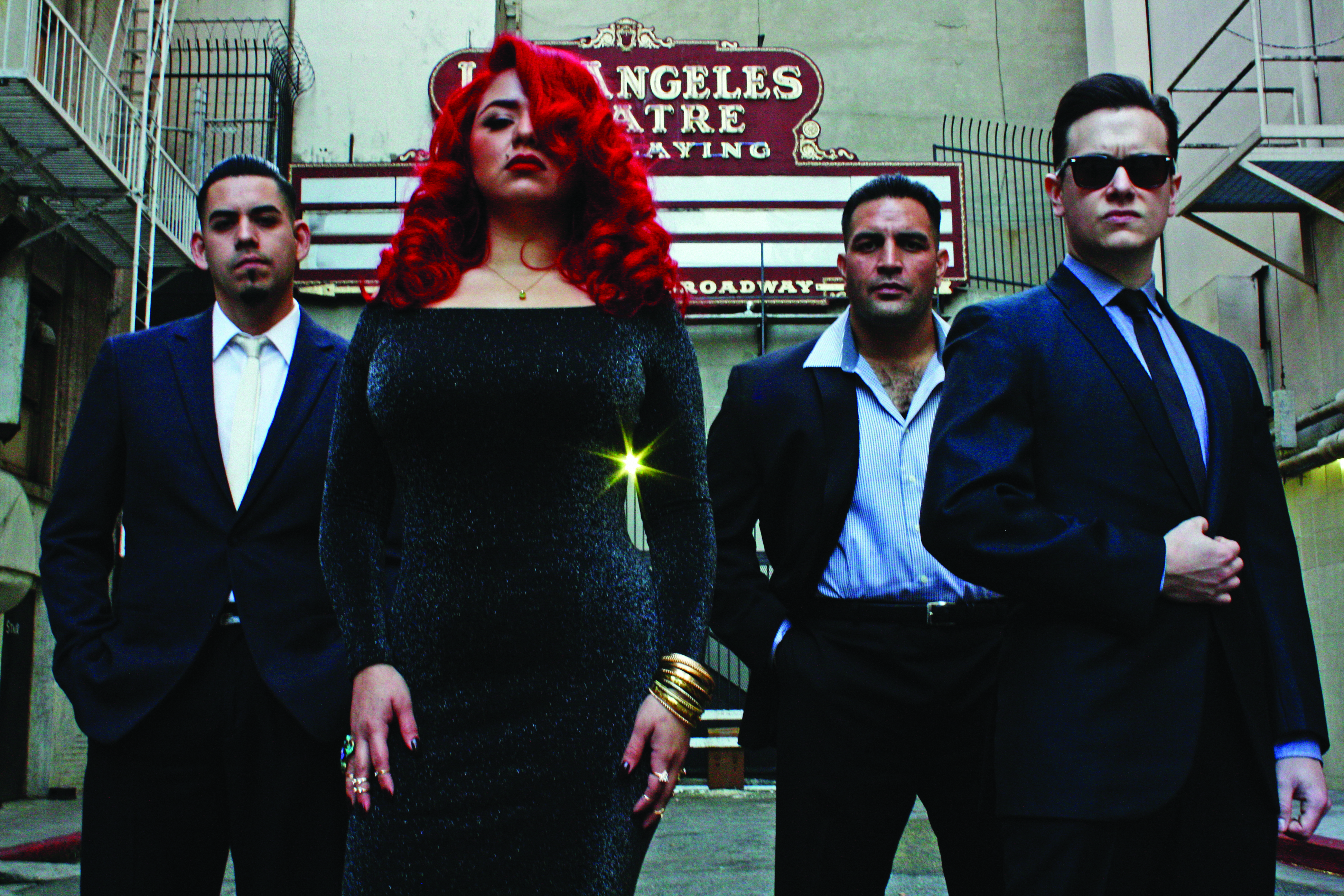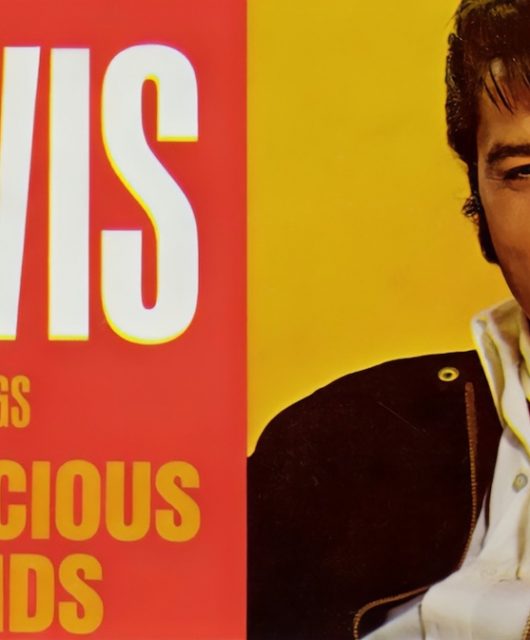By celebrating its forefathers and pioneers, Vintage Rock digs deep to untangle the roots of rockabilly and reveals why this monumental music could only have come from Tennessee. By Dan Biggane
From the blues bars of Beale Street to the Tennessee honky-tonk taverns, the origins of rockabilly all lead back to Memphis. While pockets of this fresh new fusion of country and blues could be found dotted all over the US in the mid-50s, that little city sitting on the banks of the Mississippi River was perfectly primed to be the epicentre of rock’n’roll’s Big Bang… as Carl Perkins once sang: “Let’s give old Tennessee credit for music!”
But what is rockabilly, aside from the sound of youthful exuberance, and does it fundamentally differ from rock’n’roll? Taking time out from his recent UK tour, Slim Jim Phantom of Stray Cats offers: “Maybe there’s a rhythmic difference, where rock’n’roll is based more on an eighth note feel and rockabilly is more swing, but I think that it’s all part of the same cool thing.”
Muddy Waters would sing, “the blues had a baby and they named it rock’n’roll,” but the blues did have a significant other in country music. From Appalachian folk songs to western cowboy ballads, country’s own tangled roots can be traced back to the city of Bristol on the Tennessee/Virginia border.
In the summer of 1927, record producer Ralph Peer of the Victor Talking Machine Company conducted recording sessions using the new Western Electric microphone and captured 19 artists on tape. Those sessions featured the first recordings by The Carter Family and fellow pioneer Jimmie Rodgers. Connecting hillbilly music with the blues on early numbers Blue Yodel (T For Texas) and Daddy And Home, Rodgers was the first nationally known country star.
If Rodgers gained the Father of Country Music moniker, it was Bob Wills who would be crowned the King Of Western Swing. With his Texas Playboys, Wills gave country music a raucous dancehall beat. Songs such as New San Antonio Rose and Faded Love influenced the future King of Rock’n’Roll and Wills was very much the Elvis of his day.
Appearing at the Grand Ole Opry, Nashville’s hugely influential radio barn dance on WSM, Wills caused outrage in December 1944 when he went against policy by not only performing onstage with a drummer but placing his sticksman, Monte Mountjoy, front and centre.
It’s interesting to note how the Opry also initially took issue with one of the genre’s most influential acts when it rejected Hank Williams. Having been taught guitar from blues musician Rufus ‘Tee Tot’ Payne, the talented but troubled King of Country auditioned for the Opry in September 1946 but was turned down due to his unpredictable lifestyle, deemed too ‘rock’n’roll’ before rock’n’roll was a recognised thing.
After this rebuff, Williams would go on to land a publishing deal with Acuff-Rose and sign to MGM Records. One of his first songs with the new label, Move It On Over, could now be considered among the earliest examples of rock’n’roll. Indeed, the 12-bar blues chord progression and verse melody of Bill Haley & His Comets’ 1954 classic, Rock Around The Clock, certainly strikes more than a canny similarity to Williams’ debut Top 5 Billboard Most Played Juke Box Folk Records entry of 1947.
A year later, Williams joined the newly-formed Louisiana Hayride, a more progressive radio programme than the traditional Opry. Premiering on 3 April 1948, the Hayride was a Saturday night show recorded live and broadcast from Shreveport’s Municipal Auditorium. Aired on the 50,000-watt AM radio powerhouse KWKH, the Hayride could be picked up in both Chicago and L.A., thus providing an exciting platform for up-and-coming acts. Willing to take a chance on artists, it helped establish the likes of Johnny Horton, Eddy Arnold, George Jones, Webb Pierce and Lefty Frizzell.
“Shows like the Hayride and Big D Jamboree in Dallas were incredible because they hosted a variety of entertainment,” Lefty’s brother David tells Vintage Rock. “It was not always traditional country and a lot of different music was also represented.”
The risk-taking Hayride aired hot-rockin’ acts including the Hillbilly Heartthrob, Faron Young, and America’s Most Colourful Hillbilly Band, The Maddox Brothers & Rose, something of a precursor to the storm that was brewing in Memphis…
BEALE STREET BLUES
Located at 706 Union Avenue in Memphis, a short 15-minute walk from the banks of the Mississippi and the city’s Beale Street, is Sun Studios. Established on 3 January 1950 by Sam Phillips, a local WREC radio announcer and sound engineer with a forward-thinking attitude, the studio offered an open-door policy during a deeply segregated time. With a “We Record Anything – Anywhere – Anytime” calling card, Phillips would lay down an acetate recording for anyone willing to pay $3 for one side or $4 for two.
Elsewhere on Union Avenue, WDIA-AM heralded the birth of Black radio in Memphis. With an audience that reached through the Mississippi Delta to the Gulf Coast, WDIA made a star out of numerous Beale Street bluesmen. One such youngster, Riley King, was promoted to singer and disc jockey after a stint working on a daily 15-minute advertising show.
Initially given the nickname the ‘Blues Boy’, later shortened to ‘Bee-Bee’, and finally ‘B.B.’, his popularity with audiences resulted in B.B. King recording five singles for RPM Records at Sun Studio. King would go on to help spread the word of what Phillips was doing among Black musicians in Memphis… That word reached a DJ at WROX in Clarksdale, Mississippi, called Ike Turner.
Turner piled his Kings Of Rhythm and their gear into a car and they hit Highway 61 to Memphis. On the way, they wrote Rocket “88”, their landmark ode celebrating the fastest automobile on the road. As they travelled, so the story goes, guitarist Willie Kizart’s amplifier fell out of the boot of the car, damaging the speaker cone. To fix the problem, Phillips stuffed it with newspaper and when switched on and turned up, it created the most remarkable distorted buzzing sound.
With no label, Phillips licensed a rockin’ recording of Rocket “88” to Chess and the single reached No.1 on the US R&B chart. Despite crediting the track to saxophonist and vocalist, Jackie Brenston And His Delta Cats, Turner continued to work for Phillips as an unofficial talent scout, scouring the pool halls and churches for hot young acts.
In 1951, he heard a not-so-young bluesman going by the name of Howlin’ Wolf in West Memphis and eagerly paired them up. Cutting his earliest sides and licensing them out to Chess, Phillips was suitably captivated by the man-mountain: “The Wolf would get in there and go into a trance,” he once commented. “He was a commander of your soul, and he got hold of you with the blues.”
Tired of continually licensing his work out, Phillips launched Sun Records in February 1952 and, two months later, Drivin’ Slow by Johnny London was its first single. Soon enough Sun landed its first hit when popular WDIA DJ, Rufus Thomas, took Bear Cat to No.3 on the Billboard R&B chart… however, it was very nearly its last.
Written and recorded as a holler back to Big Mama Thornton’s Hound Dog a copyright infringement suit brought about by Don Robey, owner of Lion Music Publishing Company, with whom songwriters Leiber & Stoller were signed, very nearly bankrupted the fledgling label. Thankfully, the future of rock’n’roll was saved and Sun continued to shine, recording and pressing releases for the likes of Rufus Thomas, Little Milton, Big Memphis Ma Rainey, Little Junior’s Blue Flames, The Prisonaires and a white hillbilly cat fresh out of high school.
BIG BANG THEORY
Legend has it, Elvis Presley was prompted to cut his first acetate, My Happiness and That’s When Your Heartaches Begin, at Sun as a gift for his mother after reading an article about The Prisonaires in the Memphis Press-Scimitar. The harmony group, led by Johnny Bragg and Robert Riley, were all incarcerated at the Tennessee State Penitentiary in Nashville. Phillips arranged for the group to be transported to 706 Union Avenue to lay down Baby Please b/w Just Walkin’ In The Rain and the single was a hit on the Billboard R&B chart in 1953.
On 5 July 1954, Elvis entered the studio with guitarist Scotty Moore and bassist Bill Black for the first time. Clowning around during a break in the session the trio played That’s All Right. A moment often described as rock’n’roll’s Big Bang, Phillips asked them to repeat the jam and captured the magic on tape. Three days later an acetate of Sun 209 landed in the hands of WHBQ’s leading Memphis radio personality Dewey Phillips.
While not related to Sam, the DJ shared a belief in unifying a divided Memphis through music. At a time when most stations played ‘Black music’ or ‘white music’, Phillips referred to his listeners as “good people” and would spin everything from Howlin’ Wolf to Hank Williams. He was the first to air That’s All Right on his Red Hot & Blue show and, inundated with calls from listeners oblivious to the colour of the voice they heard, he played it again… and again… and again. While New York City’s Alan Freed may have popularised the phrase ‘rock and roll’ on mainstream radio, it was Dewey who first introduced the revolutionary sound to the listener.
The disc soon became a regional phenomenon and the outlandish take on Bill Monroe’s bluegrass classic, Blue Moon Of Kentucky caught the attention of Hank Snow. The Canadian country pioneer, whose hits I’m Moving On, The Golden Rocket and (Now And Then There’s) A Fool Such As I had been absorbed by Presley, persuaded the Opry to allow the rising star to open for him. Reception to his set could be described as cool at best, but the hottest kid on the block would soon be rewriting history with the Hank Snow All-Star Jamboree tour and at the Opry’s chief rival.
The Hayride audience nicknamed him the Hillbilly Cat and he was signed to a year-long series of appearances in Shreveport. On 3 March 1955, the shakin’ sensation was thrust into sitting rooms via his first TV appearance on the KSLA-TV Hayride broadcast. Within months, Colonel Tom Parker was pulling the strings and Elvis made his final appearance at the Hayride – that night emcee Horace Logan announced the immortal line: “Elvis has left the building”.
ROCK’N’ROLL RADIO
Hoping lightning would strike twice, Phillips auditioned a 22-year-old Carl Perkins, who’d been playing an upbeat rendition of Blue Moon… around Tennessee taverns for several years. Releasing Movie Magg/Turn Around on the Phillips-owned Flip label, Perkins’ Sun debut, Let The Jukebox Keep On Playing/Gone, Gone, Gone, would keep to the winning R&B/country formula. However, it would be his next single that would garner attention from all stations. Perkins’ self-penned Blue Suede Shoes reached No.2 on the Billboard Hot 100 and would only be kept off the top spot by Presley’s Heartbreak Hotel. Elvis, of course, would open his eponymous debut album with a cover of Blue Suede Shoes in 1956.
Perkins continued to write his own material and tracks such as Boppin’ The Blues, Dixie Fried and Matchbox earned him the title, King Of Rockabilly, as rockabilly itself became king of the airwaves. Almost everything Sun touched turned golden.
Having auditioned in 1955, Johnny Cash along with The Tennessee Two – guitarist Luther Perkins and bassist Marshall Grant – would become Sun’s most prolific act and the first to release an LP, Johnny Cash With His Hot And Blue Guitar! in October 1957.
Jerry Lee Lewis, The Killer on pianner from Louisiana, made his first recordings at Sun in 1956 and exploded the following year with Whole Lotta Shakin’ Goin’ On, while Texan outfit The Teen Kings, fronted by Roy Orbison, also signed in 1956 and soon scored a hit for Sun with Ooby Dooby/Go! Go! Go!
Charlie Feathers, who was performing in the Memphis honky-tonks and befriended Phillips, would only cut one single, Defrost Your Heart, with Sun before a disagreement in direction saw the youngster head to King where he’d release some fine rockabilly. However, Sonny Burgess (Red-Headed Woman, Ain’t Got A Thing and Itchy), Billy Lee Riley (Rock With Me Baby, Flyin’ Saucer Rock’n’Roll and Red Hot) and Warren Smith (Rock & Roll Ruby, Ubangi Stomp, So Long I’m Gone) offered fiery additions to the stable.
Rockabilly went transatlantic when Buddy Holly took That’ll Be The Day to the top in the UK with his Crickets in the autumn of 1957. Recorded at Norman Petty’s studio in Clovis, New Mexico, their success highlighted how artists did not necessarily need to call in Union Avenue for hits.
Chuck Berry had, of course, been a-motivatin’ all over the airwaves since Chess released Maybellene in July 1955. As had The Architect of Rock, Little Richard, whose Tutti Frutti offered the kids that certain ‘A-wop-bop-a-loo-bop, A-lop-bam-boom!’ they were looking for in October ’55 on Specialty.
Fellow The Girl Can’t Help It stars, Gene Vincent and Eddie Cochran, provided Capitol and Crest with their own rockabilly cats to rival Elvis, while Johnny Burnette, from the same public housing project as Presley, whipped up a storm with his Coral 45s: Tear It Up, Oh Baby Babe and The Train Kept A-Rollin’. Sonny Fisher was signed to country label Starday, who wanted a slice of the rockabilly pie, and delivered Hey Mama, while Queen of Rockabilly Wanda Jackson’s I Gotta Know proved the girls could party just as hard as the boys for Capitol.
MAINTAINING MOMENTUM
You could not stop the rock. Arkansas-born Narvel Felts may have found fame as a country artist, but he nearly became another highlight in Sun’s rockabilly legacy. He tells VR: “Momma would listen to country stations and when I’d heard a song I liked I would attempt to learn it. When Elvis came along his record really jumped out. I was 15 when I first heard That’s All Right and I would sing and play along. I loved Baby Let’s Play House and heard that Elvis was going to be at the Armory in Sikeston. I was 16 and had my driver’s licence, so decided that when daddy got home from work, I was going to get the car and drive the 40 miles to see Elvis. But daddy came walking home from work that day because his car had broken down and I didn’t get to go or see Elvis.”
Felts was discovered when he entered a talent show at school and won. He formed his band, Narvel Felts & The Rockets, in December 1956. “We opened a show for Roy Orbison And The Teen Kings at the drive-in theatre in Dexter, Missouri. Afterwards, Roy offered to help me get an appointment at Sun. So, lead guitarist Leon Barnett and
I drove down to Memphis, and we played for [producer] Jack Clement.
“He said, ‘Go home and write some more songs, then come back with the whole band’. At the end of our second session, Clement thought we had a record, but we’d have to wait a year before anything was released… an eternity! As we hadn’t signed anything we drove up to Chicago for an audition with Mercury. We played and they asked to record 12 original songs that same day at Universal. They offered us a contract and within a month my first record, Kiss-A-Me Baby/Foolish Thoughts, was out.”
Felts would turn towards country and score his first major hit in 1973 with a cover of Dobie Gray’s Drift Away. “Even though they were not big, those early rockabilly ones from the 50s are my favourites now.”
Rockabilly burned bright and fast, leaving an indelible mark. While 50s rock’n’roll didn’t fade away, it did become diluted before emigrating overseas to be reinterpreted by a new wave of fresh-faced Brits in the 60s. That said, there will always be another generation, often around 20 years later, who reinterpret the sound of a bygone age. During the late 70s and 80s, rockabilly enjoyed a comeback. One of the most successful purveyors of the revival was New York’s Stray Cats, formed by guitarist and vocalist Brian Setzer, bassist Lee Rocker, and drummer Slim Jim Phantom.
“As a teen, learning to play the drums, I wanted something that had a swing beat to it that wasn’t hardcore jazz,” explains Slim Jim. “Rockabilly was something that I could relate to and was within my technical capability. When we started the Stray Cats, we really got into the music, fashion, hairstyles and attitude.
“As time has passed, rockabilly has become something of a lifestyle choice. You see a certain type of rockabilly and you know exactly what kind of car they want to drive and how the inside of their house looks. Back in the day, all the teens had was the music and a rockabilly guy wouldn’t look to buy an old car because the old cars were still new cars [laughs].
“But the music is central to it all and the sound of Chuck Berry, Eddie Cochran, Janice Martin, Barbara Pittman, Elvis, Little Richard, Buddy Holly, completely holds up today. Now, when I listen to Haley’s Rock Around The Clock, Vincent’s Be-Bop-A-Lula, Perkins’ Put Your Cat Clothes On, Jackson’s Fujiyama Mama, Cash’s Big River, they sound better than ever… they never get old.”






